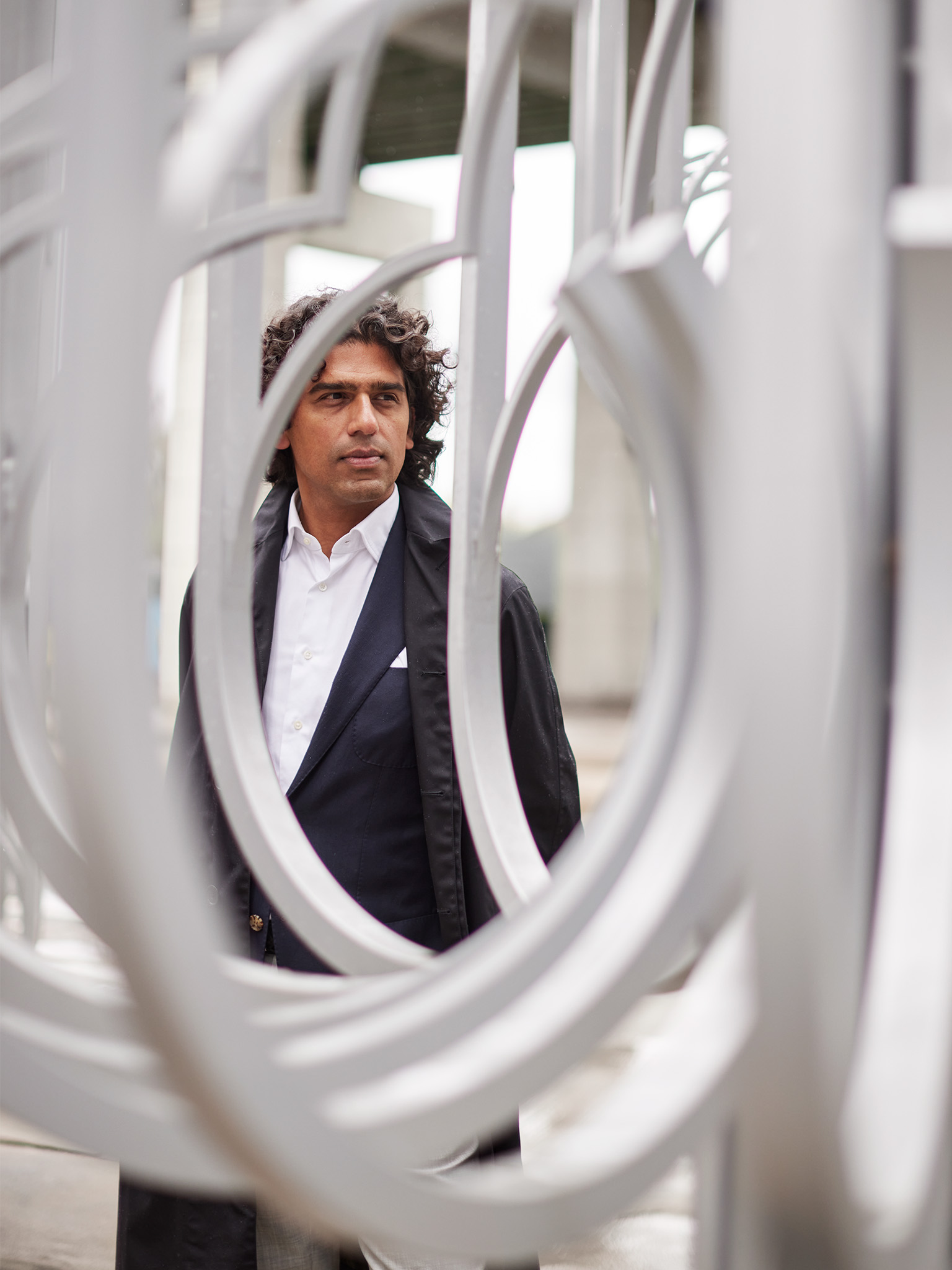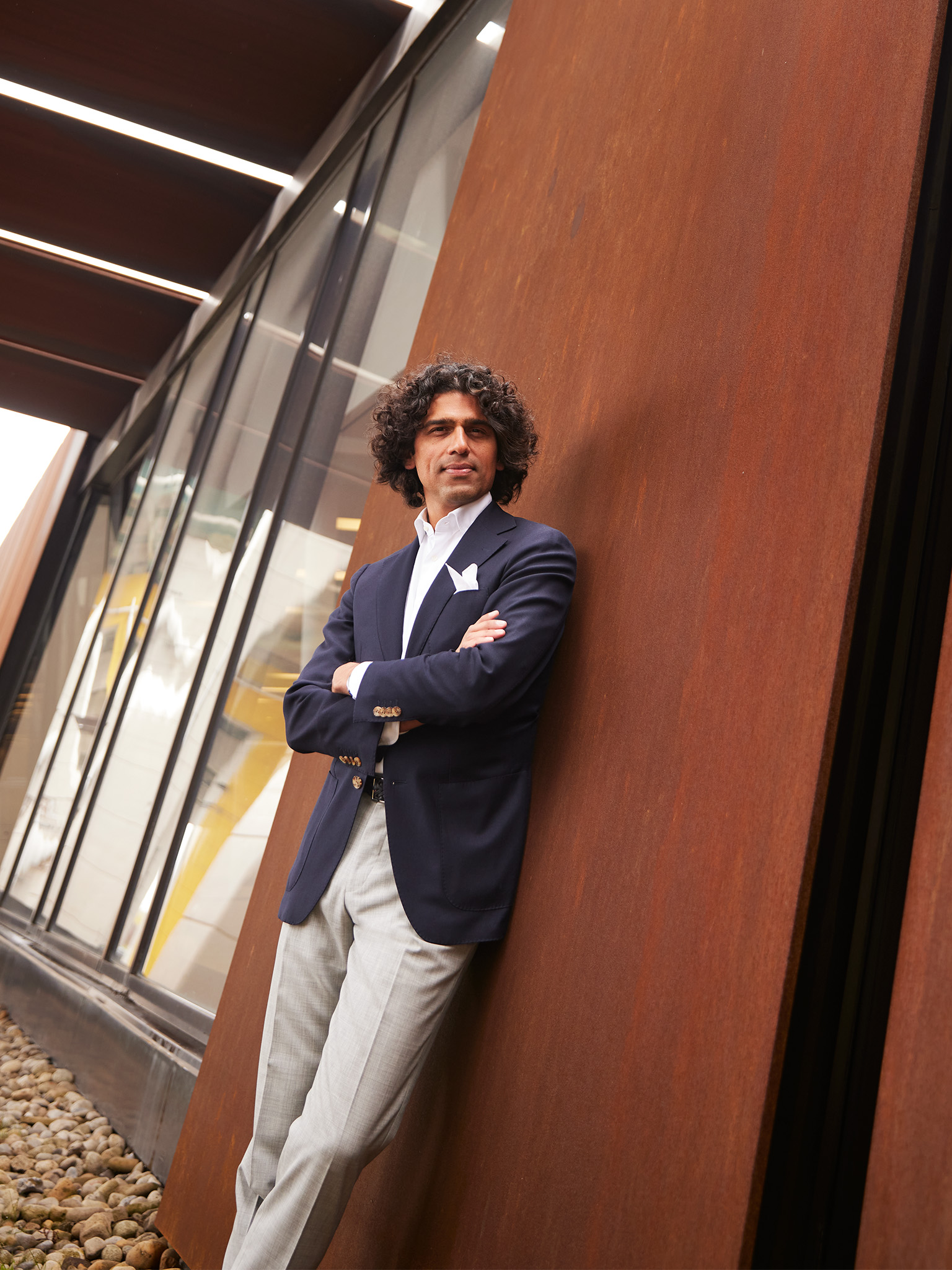Rain Check
by Joanna Thompson
photography by Chris Nicholls
When most people watch water swirling down a storm drain, they see a whirlpool in miniature, a tiny reminder of the power of a current. Usman T. Khan sees a design challenge.
Khan, a civil engineer at York University, is on a mission to revolutionize the field of urban hydrology through green infrastructure and computer modelling. Urban hydrology refers to the way that water flows through cities and over human-made structures. It encompasses everything from designing city sewage-treatment plants, to studying the path of a river cutting through a metropolitan area, to modelling how rain drains out of a parking lot.
What I’m usually most interested in is stormwater. What happens to water after it rains? Where does it go?
“What I’m usually most interested in is stormwater,” says Khan, who recently participated in York’s inaugural micro-lecture series in sustainable living. “What happens to water after it rains? Where does it go?” In order to devise strategies to better absorb excess runoff, Khan and his team are applying artificial intelligence models to urban water flow. Khan’s research focuses on predicting where and when floods are most likely to happen in cities – and designing sustainable measures to help mitigate them. As climate change and aging infrastructure make urban areas more vulnerable to flooding, this work could help shape a more sustainable, equitable future.

Khan grew up in a desert. He spent a decade of his childhood in the arid United Arab Emirates, where temperatures climb to over 50 C in the summer months and dust storms regularly blow through. Over the course of those 10 years, he says, it only rained once. “I was really young, and I was so excited,” he recalls.
This experience planted the seeds for Khan’s fascination with rainfall – and paved the way for his eventual career in hydrological engineering.
After earning a degree in civil engineering from the University of Calgary, Khan went on to a PhD program at the University of Victoria under mechanical engineering professor Caterina Valeo. Under her tutelage, Khan studied green infrastructure, including rain gardens, and developed an early mathematical model for predicting flood risks up to seven days out from a storm. “Usman was a wonderful student,” Valeo says. “To have even a day’s lead time is amazing, let alone seven days.”
Worldwide, floods are responsible for nearly 6,000 deaths and billions of dollars in damage every year. Much of any flood’s destructive power comes from a city’s ability to handle the volume of water. And unfortunately, between crumbling dams, rusting pipes and overfilled retention ponds, many cities urgently need to upgrade their water management infrastructures for the 21st-century.
Khan has spent years investigating various long-lasting, easy-to-implement, eco-friendly strategies for draining and storing away excess H2O.
Climate change is only ratcheting up that urgency. Storm patterns across Canada are shifting, causing places with historically low flooding risk to see significantly more water. “A storm that would have normally showed up once every five years now shows up every year,” Valeo says. And coastal areas are slowly flooding due to sea-level rise.
As the world continues to warm, it will become increasingly important for Canada – and countries the world over – to renovate its hydrological infrastructure. However, “it’s hard to design for future climates right now,” Khan says. First, civil engineers need a better understanding of how climate patterns will shift.
Khan’s current research could help with that. Using artificial intelligence, he and his team are working to create a computer model that can predict an area’s risk of flooding. The model combines massive amounts of data, drawing from factors such as rainfall, temperature, proximity to a body of water and soil absorbency, as well as other variables, to forecast floods across Canada.
Similar systems have already been deployed in places such as the United States and China. And Google’s flood prediction model, which launched in 2018, has been used to forecast floods in sensitive regions such as Bangladesh and eastern India. But, Khan says, no such model exists for Canada on a large scale. He and his team aim to create the first. “It’s really ambitious,” he says.

It may be ambitious, but Valeo believes that Khan and his collaborators are up to the challenge. “It is so good to see him be successful,” she says.
Of course, it’s not enough to simply know when and where a flood might strike; you also need to be able to deal with the water. That’s where green infrastructure comes in. Khan has spent years investigating various long-lasting, easy-to-implement, eco-friendly strategies for draining and storing away excess H2O. These include things such as rain gardens and absorbent concrete, which are easier to install than traditional infrastructure such as underground pipes.
These technologies can also improve water quality. Their porous structures filter stormwater runoff and remove contaminants, such as road dust and micro plastics, before they can wash into a major waterway.
Unfortunately, flood prevention infrastructure is not equitably distributed. “Disadvantaged people get disproportionately affected by floods on a global scale,” Khan says. In the United States, for example, predominantly Black communities have a 40-per-cent higher flood risk compared to predominantly white areas. This is largely due to the fact that marginalized people receive less funding for infrastructure and disaster relief in general. However, most computer models don’t take these economic disparities into account. “I think we need to change that,” Khan says.
Some of his models take these socioeconomic disparities specifically into account. Khan hopes that by applying these data to real world infrastructure policy, he and his collaborators might help to protect the people most at risk. ■